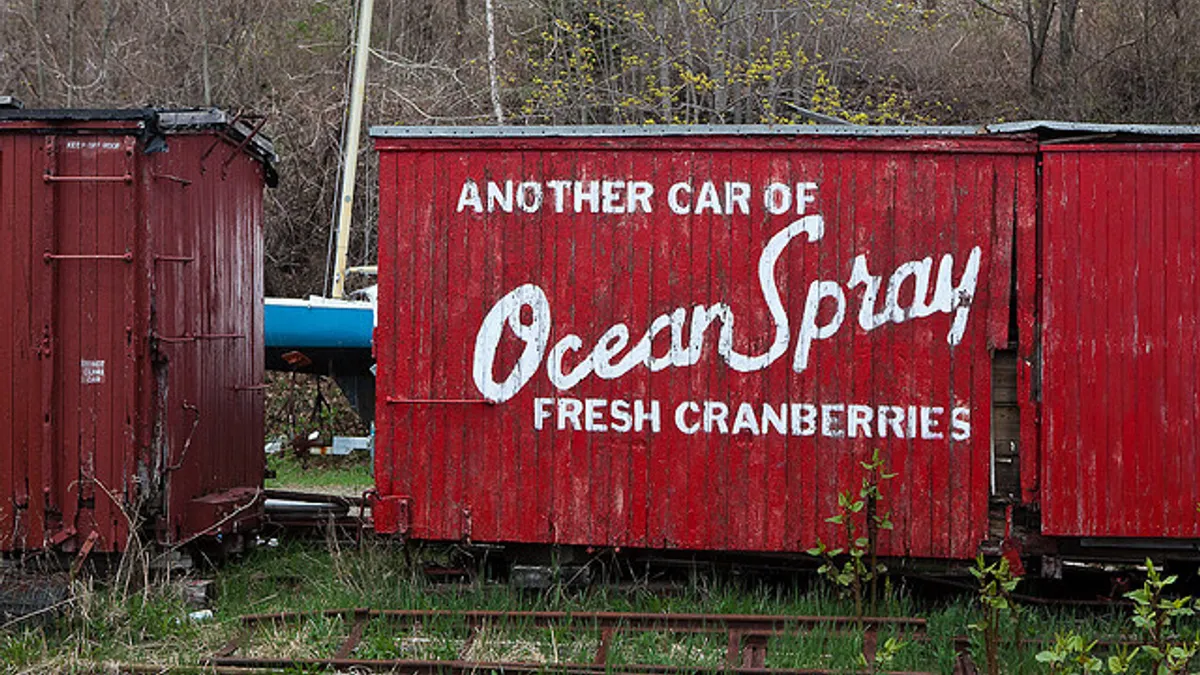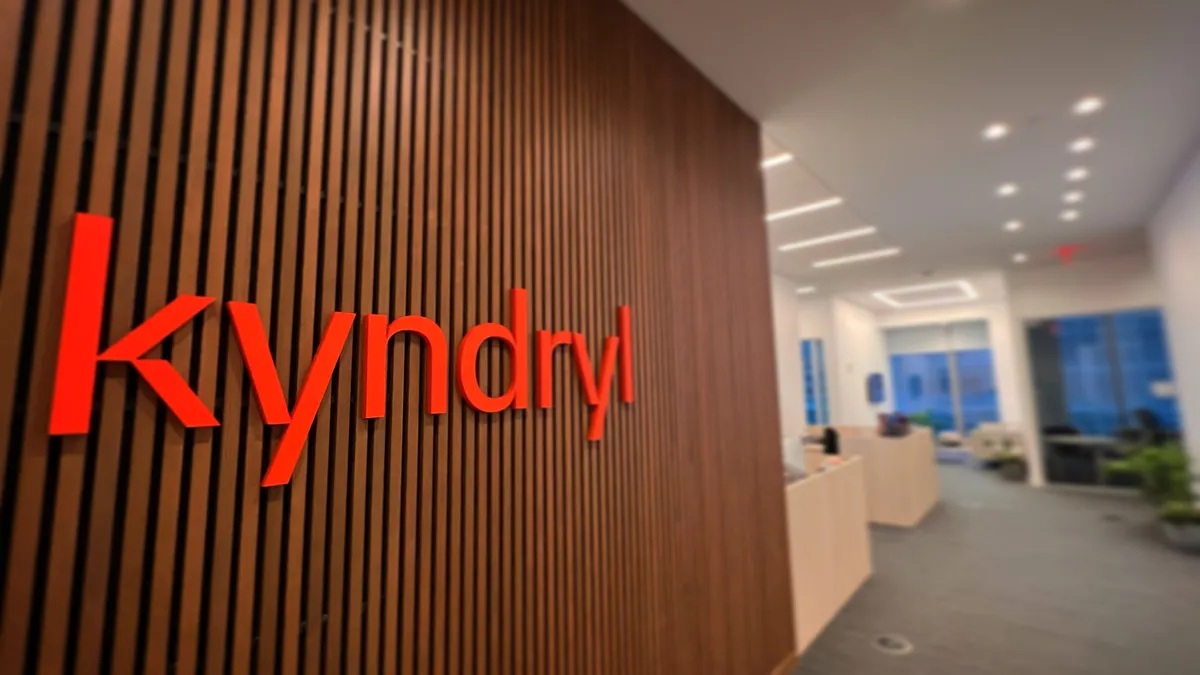In his first year at Ocean Spray, Jamie Head is taking the cranberry co-op from the bog to the cloud.
Ocean Spray named Head CIO in July 2018 and he has since laid the organizational groundwork the co-op needed for innovation for the next two or three years. He wanted to bring Ocean Spray's IT out of the backoffice.
Now, equipped with a title change — chief technology and digital officer — Head wants to take risks.
"The whole Ocean Spray business is under [digital] transformation," Head told CIO Dive. "We have a significant amount of change occurring within a small window."
Part of the digital transformation is founded in the cloud. The co-op began its migration to the cloud about three months into Head's tenure.
Ocean Spray set its cloud migration for March 2020, though Head wanted to see the migration from its data center completed by the end of the year.
"We actually paused our first attempt," in order to take a more data-driven approach, he said. During its discovery phase, "we uncovered more app to app logic and integration than expected which is going to take us a bit longer to unpack and rebuild."
Halting a migration is a common occurrence, even in the tech industry. Red Hat, for example, built its cloud strategy to "reduce the lead time from ideation to application production," according to Gartner research. Then Red Hat could assess the business risk or readiness with initial cloud deployments.
"The reality is, if you're in a pause, you're in a pause because obviously something scared you enough to go into a pause," Thomas Klinect, senior research director at Gartner, told CIO Dive. Taking a pause is a common, if not standard, phenomenon during companywide modernization.
"I've worked with global banks that told me they knew everything they had and within five minutes, we easily understood they knew nothing," Klinect said.
While understanding names of applications and their components are pieces of modernization, knowing how they are stitched together is a separate layer of intricacy. "I have never met a company that actually knows the complexity at any level," said Klinect.
"We had old architecture and infrastructure to retire … it's more about when you do the move, how do you rearchitect your applications and business so they're more modern in that space?"

Jamie Head
CTO/CDO of Ocean Spray
It typically takes companies six to nine months of lead time to craft and analyze a cloud business case, then another six to 18 months for migration.
The co-op "reworked" its original lift and shift plan. In March, the co-op's original target date, Ocean Spray will be "pretty much cloud-run," he said.
Like any technological transformation, Head expected roadblocks. "Little tiny things are going to break and they do break," said Head. Modernizing is more about how quickly an IT organization can recover with the rest of the company's support during digital transformation.
Up to the cloud
For Ocean Spray, migrating to the cloud wasn't just about the cost savings, it was about shedding Ocean Spray's legacy technology.
"I like to call it virtual burpees," said Klinect. "You're going to do virtual burpees and spend every dime the company's got and you may get something over the line."
Though cost optimization is the primary motivator for cloud adoption for 64% of companies, insufficient cloud governance can challenge that, according to 451 Research. Spikes in over-consumption and storing over-provisioned resources will cost companies
Before committing to too many unplanned "burpees," Head halted the cloud migration because the co-op had to look at how to re-architect applications and their APIs.
"We had old architecture and infrastructure to retire … it's more about when you do the move, how do you rearchitect your applications and business so they're more modern in that space? And that's what we're doing right now," said Head.
Moving more workloads to the cloud is a priority for 58% of companies, according to the RightScale 2019 State of the Cloud report. And while nearly 80% of companies will rely on the cloud for workload management, the cloud has to be architected in a way that gets "everything up and running and fluid in on the operational side of the house," said Head.
So far Ocean Spray has moved 15% of its spend to software as a service solutions, helping retire legacy tech it was built on. The co-op is at the end of an application deployment for HR with a new procurement platform coming in, working on finance and analytics platforms.
Coming in 2020
Ocean Spray's latest frontier is health and wellness.
"Not only is our cranberry a super fruit, we also know our consumers are playing in adjacent spaces so we will be experimenting at the edge and scaling where we see success," said Head. "We have a beautiful heritage, a sustainable business model, farmer-owned cooperative that spans multiple generations. My role is to ensure the legacy we create here sets them up for many more generations to come, and technology plays a key part of that."
Technology also enables speedier innovation, reducing time to market while keeping digital transformation's hurdles in mind.
"Modernizations are so wrapped around that complexity," said Klinect. Companies have to "unwind" highly complex environments "where applications talk to the databases, which talk to applications, which connects to more databases. If because if you don't unwind the complexity, then there's no reason to move."
The rapid pace of change demands over-communication with the rest of the business, "make sure people know why. Always keep educating," he said. Engaging with the business on change eliminates the fear of "finger-pointing," with a companywide patience and understanding of how and why things break.
"You're going to do virtual burpees and spend every dime the company's got and you may get something over the line."

Thomas Klinect
Senior research director at Gartner
Last year Head wanted Ocean Spray's IT organization to serve as an innovation arm for the business, to do that, he had to dedicate more time to it.
The operating model of the IT department was restructured to focus on strategic partnering, digital innovation and analytics. The "No. 1 most daunting thing was changing culture and how you adapt" to changes in technology, said Head.
With a more "partnership offshoring model," the co-op was able to free up resources for executing business strategies, said Head. Constant requests for proposal and statement of work don't drive value, alliances and relationships do.
"That takes time to nurture but can be very exciting and liberating," he said.
In order for the co-op to use data for business strategically, Head will have a dedicated "pod" or "SWOT" team for unlocking data's value.
"We're going to have to take risks and cut corners you typically wouldn't in a large enterprise," said Head. "It's scary-exciting, but it's so important to push the boundaries and take educated risk to really help Ocean Spray grow in a meaningful way with our consumers beyond its core."





















